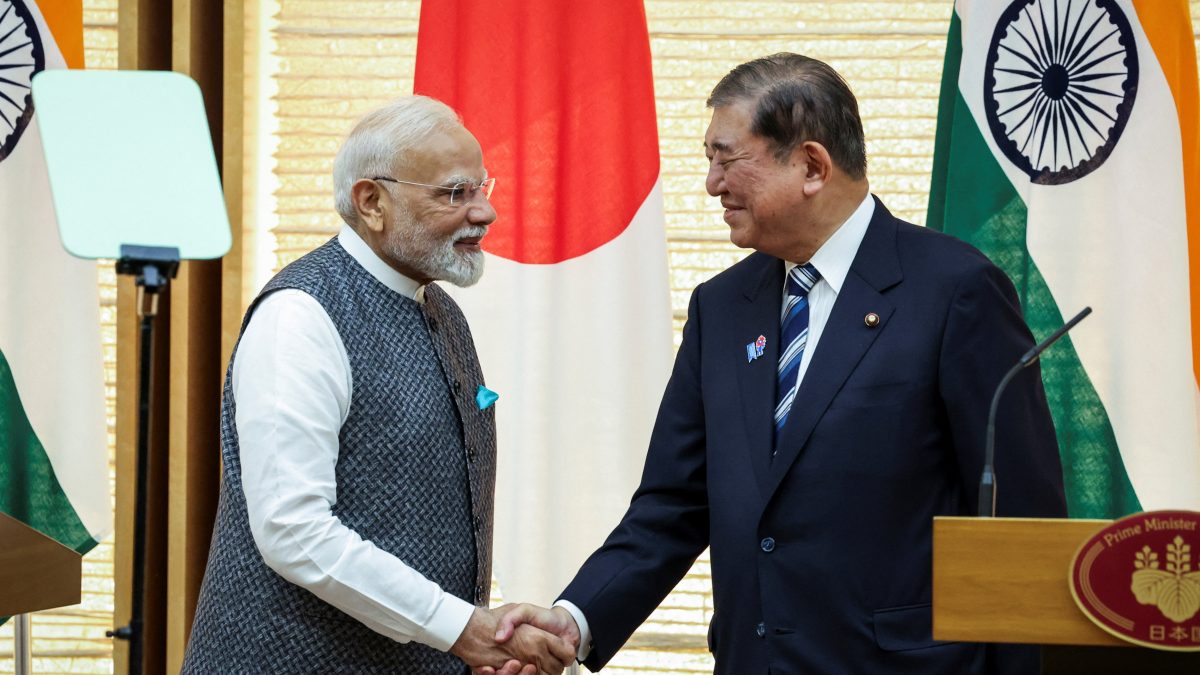India and Japan have inked a deal to conduct a joint lunar exploration mission to the south pole of the Moon. The agreement, called Chandrayaan-5, was signed during Prime Minister Narendra Modi’s visit to Tokyo.
Under the deal, India’s Isro and the Japan Aerospace Exploration Agency will work collaboratively to conduct the joint lunar polar exploration mission (LUPEX). The pact was exchanged between Jaxa Vice-President Matsuura Mayumi and India’s Ambassador to Japan, Sibi George.
“We welcome the collaboration between Isro and Jaxa for the Chandrayaan-5 mission. Our active participation has gone beyond the limits of the Earth and will become a symbol of mankind’s progress in space,” PM Modi said as he addressed a joint press conference with his Japanese counterpart, Shigeru Ishiba.
Highlighting the international recognition India received after Chandrayaan-3’s historic 2023 landing near the Moon’s unexplored South Pole, PM Modi stated that the next frontier is to intensify exploration beneath the lunar surface, with a focus on areas that could contain essential resources like water ice.
In an interview with The Yomiuri Shimbun, the Indian prime minister said, “Our G2G collaboration in the space sector, between Isro and Jaxa, is fostering a culture of cooperation between our industries and startups. This is creating an ecosystem where innovation flows both ways — from labs to launchpads, and from research to real-world applications.”
About Chandrayaan-5
The mission, approved by PM Modi in March, will be launched by Jaxa onboard its H3-24L launch vehicle and will carry Isro-made lunar lander, which will in turn take a Japan-made rover to the moon.
In addition to developing the lander, Isro is also contributing several scientific instruments to the mission. The spacecraft will be equipped with a total of seven instruments, including a mass spectrometer provided by ESA and neutron spectrometers from Nasa.
Impact Shorts
More ShortsThe mission will be conducted in 100 days and will be launched with the objectives of mapping lunar water presence, drilling lunar regolith to analyse water content, quality and composition, and performing in-situ scientific observations using spectrometers and sensors.
Japan and India hold meetings
On May 13–14, Isro and Jaxa held their third in-person technical interface meeting for the mission at ISRO’s headquarters in Bengaluru. The two-day session brought together senior officials, project leaders, and technical experts from Isro, Jaxa, and Mitsubishi Heavy Industries, Japan.
Discussions focused on key technical interfaces, the joint mission implementation plan, and possible landing sites. Isro’s Scientific Secretary, M. Ganesh Pillai, commended both teams for their progress and underscored the significance of this collaboration in advancing the mission’s scientific and technical goals.
)